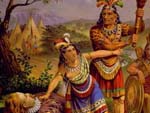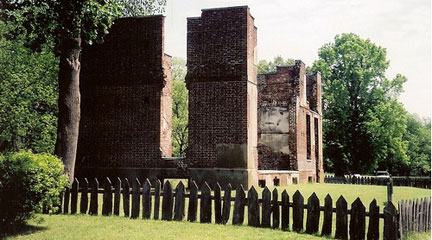Jamestown: The Starving Time

Students analyze a variety of primary and secondary sources to determine the cause of the Jamestown starving time during the winter of 1609–1610.
This lesson provides a great opportunity for students to engage in real historical inquiry with prepared sources. The lesson is displayed in three locations on the site: the student view, which guides the student through the activity; the teacher view, which provides additional background information; and a PDF file that contains scripted instructions for the lesson.
Students first read a textbook passage about the Jamestown colony in 1609 and 1610. They then discuss how the writers of the textbook might have obtained their information, and go on to analyze primary source documents that expand upon the textbook account. Students essentially "do history" as they use a variety of sources to answer a clear, concise historical question—one that can be answered in multiple ways with the given data.
Another strength of this lesson is the document collection itself. A wide variety of primary sources offer greater insight into the reasons for the food shortage that resulted in the death of over 400 colonists in Jamestown during the winter of 16091610. Particularly helpful to teachers with struggling readers is the fact that the lesson includes not only the original documents, but also "modern" versions of the documents, written in language much more accessible to students.
While the detective log graphic organizer included in the lesson provides space for students to record source information, and the lesson itself provides a great exercise in sourcing, the documents themselves contain little source information. We recommend that teachers support students in using the available information about each document to understand its perspective and meaning. In general, the lesson provides good opportunities to engage in historical inquiry, to open up and go beyond the textbook, and to use primary sources to analyze the causes of an event.

Yes
Yes
A passage from Joy Hakim's Making Thirteen Colonies is included in both the student view and the teacher view of the lesson.
Yes
Yes
Yes
Teachers will want to support students in using information about the perspective of the various sources as they interpret each document's significance and meaning.
Yes
Yes
Documents are included both in their original form, and in an adapted "modern version" that will be more easily accessible to most students.
Yes
No assessment criteria are included, but the final writing assignment provides a great assessment of students' understanding and historical thinking.
Yes
Yes








